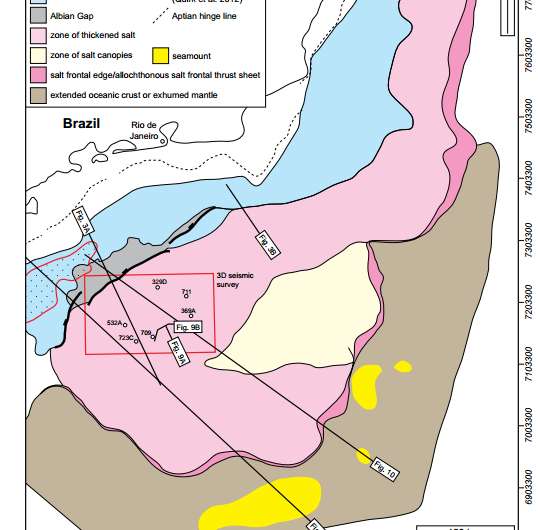The Albian Gap, salt rock, and a heated debate

Salt rock behaves as a fluid and can play a pivotal role in the large-scale, long-term collapse of the world's continental margins. However, the precise way in which this occurs is laced in controversy; nowhere is this controversy more apparent than along the Brazilian continental margin, where the origin of a feature called "the Albian Gap" has generated much heated debate over several decades.
In this new, open-access GSA Bulletin article, Christopher A-L. Jackson and colleagues enter this debate, critiquing the geological and geophysical evidence forwarded in support of the two main competing genetic models.
Their study suggests that much of this evidence is not diagnostic of either model and that a revised model is required.
Although their results are unlikely to be universally accepted, they at least will stimulate ongoing debate regarding the origin of this enigmatic structure.
More information: Understanding passive margin kinematics: A critical test of competing hypotheses for the origin of the Albian Gap, Santos Basin, offshore BrazilC. A-L. Jackson et al., Bureau of Economic Geology, Jackson School of Geosciences, The University of Texas at Austin, University Station, Austin, Texas, USA. Published online ahead of print on 19 May 2015; http://dx.doi.org/10.1130/B31290.1. This paper is OPEN ACCESS online.
Provided by Geological Society of America

















